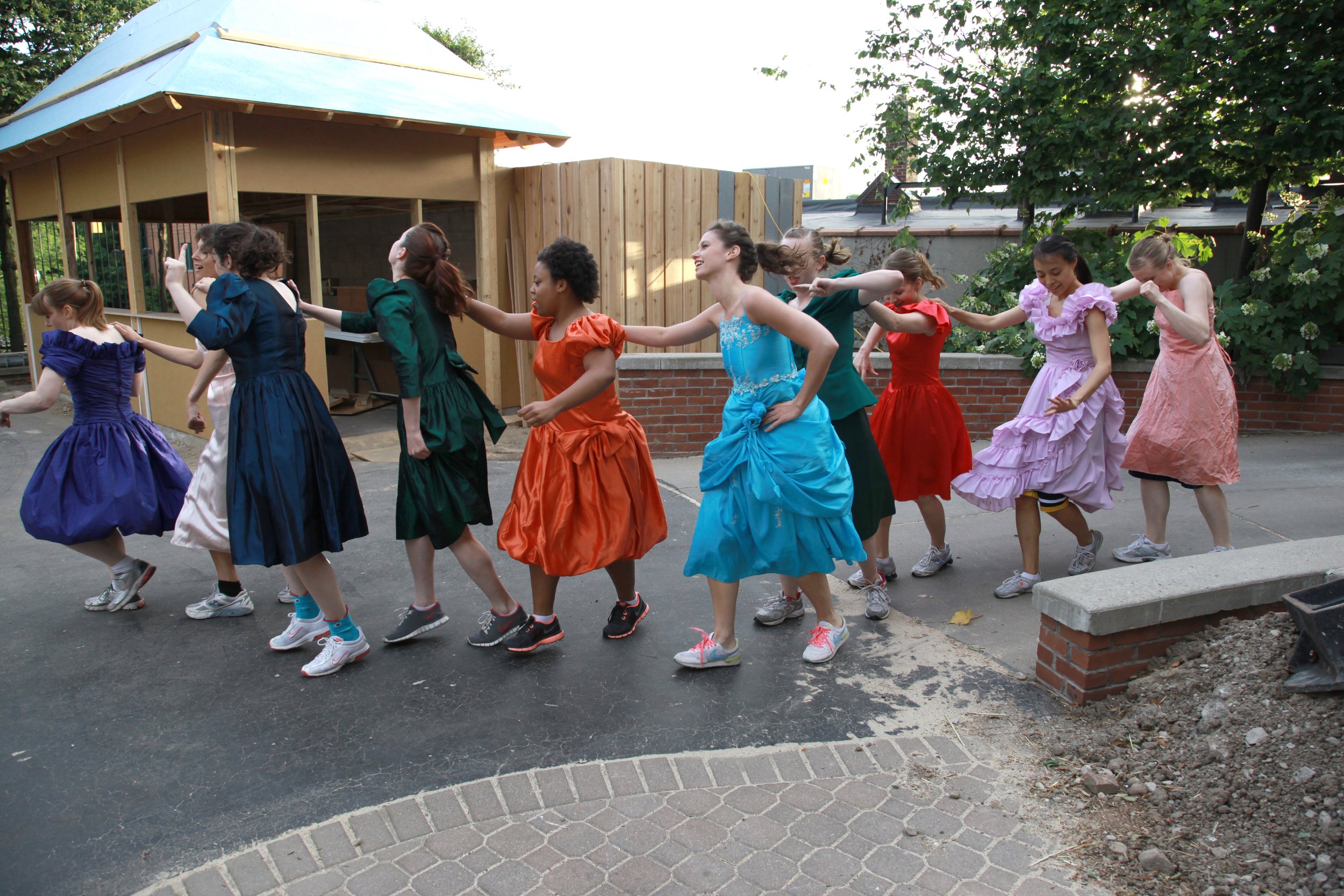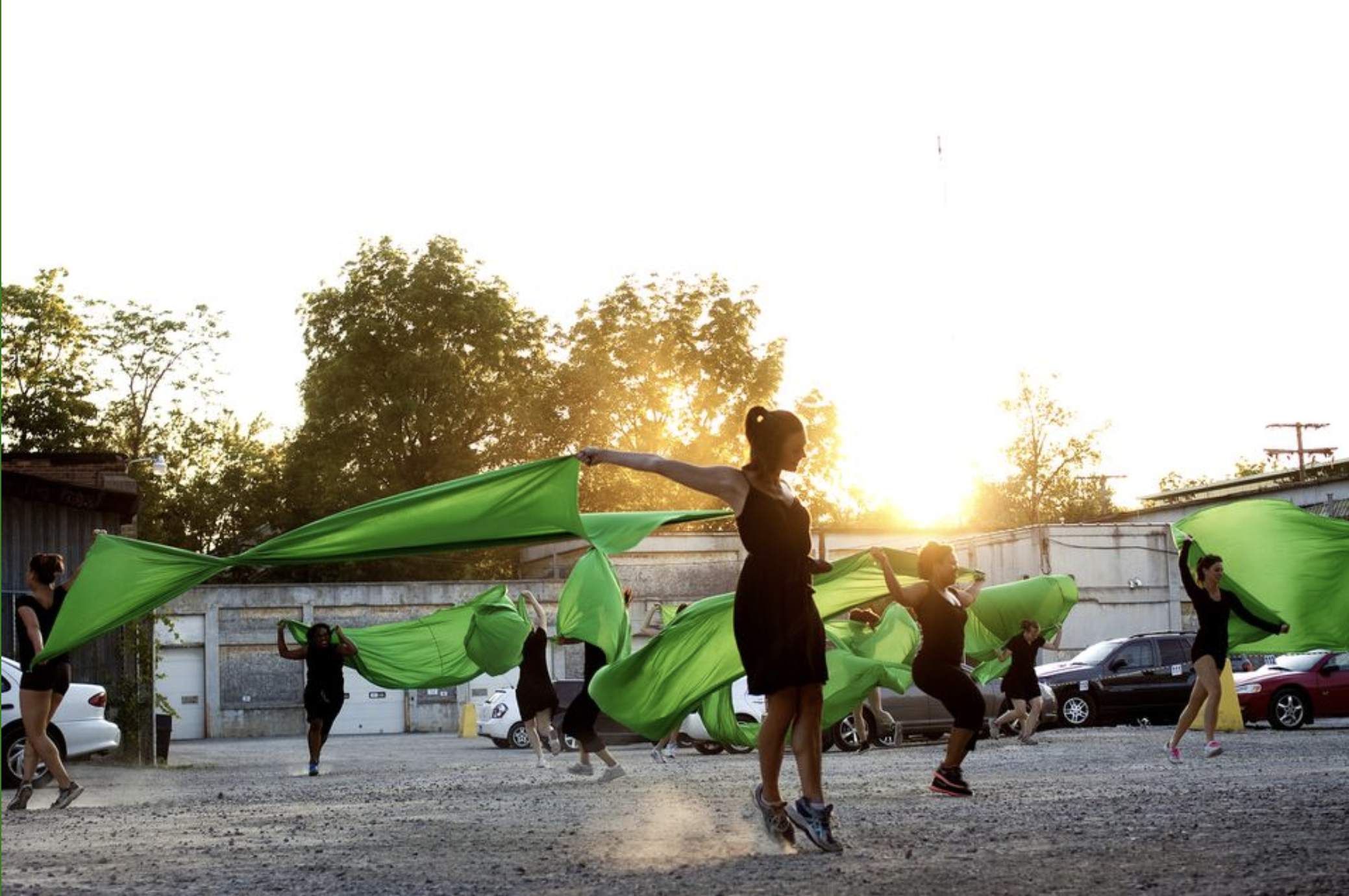Title: Pratt Block Preludes, a site dance within Corsets, Grains, & Greenways
Premiere: June 7, 8 & 9, 2012, WSG Gallery, 306 Main St., Ann Arbor, MI. Presented by Ann Arbor Dance Works
Duration: 28 minutes
Music: Excerpts from The Time Curve Preludes, by William Duckworth performed by pianist: R. Andrew Lee, Label: Irritable Hedgehog, 2011, used by permission. American Beauty, by Harry H. Zickel (1908) Publisher: Kalamazoo Corset Co Pianist: Nate May, recorded May, 2012. A Corset Can Do a Lot for a Lady, by Irving Gertz, performed by Fran Warren, Max Cat Records, from the album "The Girls"
Sound Design: Joshua Mathews
Props and Set Design: Kasia Mrowzewska
Costume Design: Patty Branam
Text arranged by Jessica Fogel, from writings by Valerie Steele, Leigh Summers
PowerPoint Design: Lindsay Brown
Dancers: Lauren Morris, Jessica Post, Maddy Rager, Alie Reehorst, Julia Smith-Eppsteiner, Nola Smith
Station 1: Progressive
Dancer: Lauren Morris
Station 2: Kline’s
Dancer: Maddy Rager
Station 3: Launch
Dancer: Julia Smith-Eppsteiner
Shortly after the United States' entry into World War I in 1917, the U.S. War Industries Board requisitioned the metal used in corsets for war production. This released 28,000 tons of steel, enough to build two battleships. Valerie Steele, The Corset: A Cultural History
Station 4: Curiously
Station 5: Corseted
Dancers: Jessica Post and Alexandra Reehorst
Station 6: Nude
Dancer: Nola Smith
Choreographer’s Program Note:
Pratt Block Preludes evokes the layered histories of 306 S. Main Street, also known as “the Pratt Block.” According to Ann Arbor historian Grace Shackman, the Pratt Block was built in 1896 to house the Ann Arbor Crescent Clasp and Corset Factory. Incorporated in 1891, the factory moved in 1896 to 306 S. Main Street, employing approximately 20 workers, including 16 women. Before the factory closed in 1912, one of the street-level storefronts was taken over by Schumacher Hardware, which eventually took over most of the rest of the building. In 1930, Kline’s department store moved in, remaining until 1994. In 1961, Kline’s covered the terra-cotta detailing of the original building behind a white stucco facade. Developer Ed Shaffran bought the Pratt Block after Kline’s closed and restored the building to its original brick and terra cotta. The WSG Gallery moved into the building in 2008.
Description: An excerpt from a description of Pratt Block Preludes is copied here from one of several talks I gave about the larger project, Corsets, Grains, & Greenways. A link to the complete talk and PowerPoint is included below. The dance was one of five dances presented by five choreographers as part of Corsets, Grains, & Greenways, which I conceived of and directed. My own choreography within the project is entitled Pratt Block Preludes. “Pratt Block Preludes, explored the layered histories of the building, and diverse ways women have been represented in fashion, advertising, and visual art over the 100 year history of the building. I was excited to discover that the building, known as the Pratt Block, was built in 1896 to house a corset factory. It then became Schumacher’s hardware store in 1912, and from 1930-1994, it was Kline’s department store. The WSG Gallery moved into the building in 2008, and is a wonderful space that showcases the art work of many prominent artists. I was interested in the way the building transformed from a feminine space that created corsets—a factory that employed mostly women—to a more masculine space—the hardware store—to a department store—and I liked the way the building transformed from a space that constructed corsets- hard to wear, to a hardware store, to a department store, where you went to figure out what to wear and I tried to represent all these incarnations of the building in different scenes.” Research in Action talk about project
Link to video about the project
Audience feedback/correspondence
Final Report for Arts of Citizenship Grant: lessons learned
Corset lecture/text heard in a recorded version in Station 4 of Pratt Block Preludes
PRESS:
University of Michigan Montage preview
Let’s Save Michigan: It’s About Place article
Photos below of Pratt Block Preludes by Glenn Bering Photography dress rehearsal June 4, 2012. Four photos at the end of Nola Smith in nude unitard by Nora Venturelli.





























Photos by Glenn Bering below are of the larger Corsets, Grains, & Greenways June 4 dress rehearsal, including images of works by Marly Spieser-Schneider, Adesole Akinleye, Monica BIll Barnes, and Robin Wilson. The photos of the dancers with green fabric in the parking lot is from the last work on the program, Greening the Way, choreographed collaboratively by Fogel, Akinleye, and Wilson. Greening the Way featured a live choral performance by members of Dr. Willis C. Patterson’s Our Own Thing Chorale.




















































